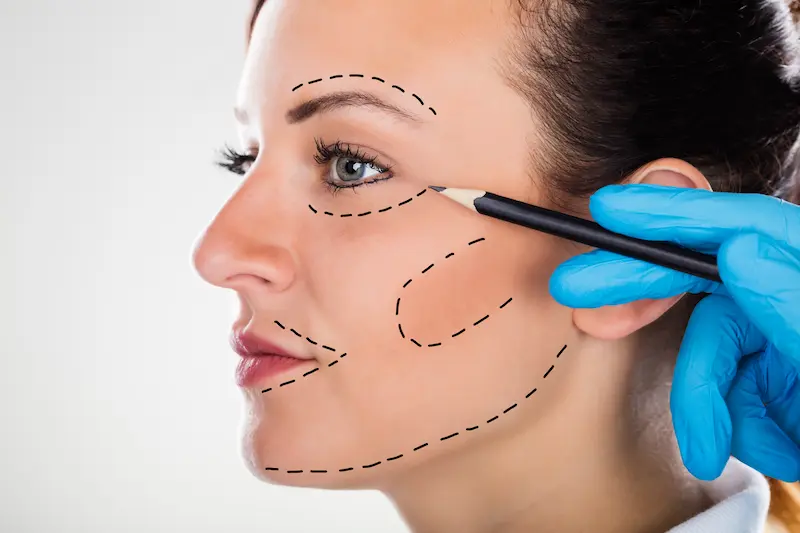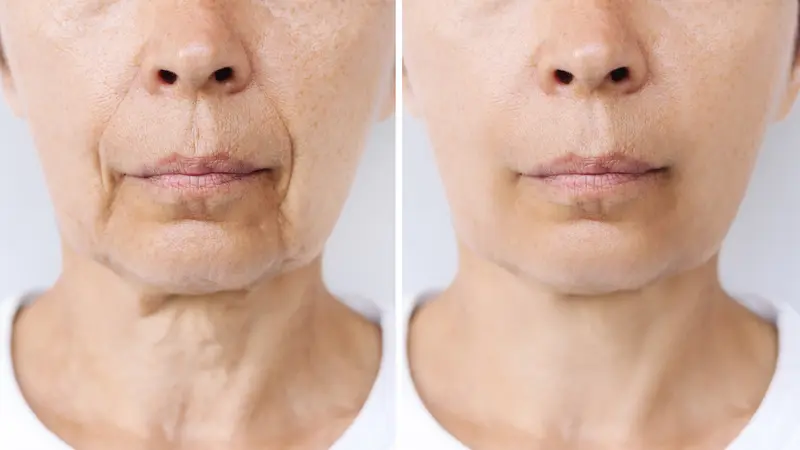
Facelift Surgery has become one of the most sought-after procedures in the realm of cosmetic and plastic surgery. With advancements in modern surgical techniques, this procedure is designed to restore a youthful facial appearance by reducing wrinkles, sagging skin, and other visible signs of aging. As interest in maintaining a youthful appearance grows globally, many prospective patients begin their journey by researching the fundamentals of this procedure. This section lays the groundwork by explaining what Facelift Surgery is and discussing who is the ideal candidate for undergoing such a transformative process.
What Is Facelift Surgery?
Facelift Surgery, also known as rhytidectomy, is a cosmetic procedure aimed at tightening and lifting the skin on the face and neck. The procedure addresses age-related changes such as deep creases, loose skin, and an overall lack of definition in facial contours. The surgical process involves removing excess skin, tightening underlying muscles, and repositioning tissues to create a more refreshed appearance. Although every Facelift Procedure is tailored to the individual’s facial structure and aesthetic goals, the core intent is to achieve a rejuvenated look without drastically altering the natural features of the face.
Modern techniques have evolved significantly over the years. Today, surgeons often integrate minimally invasive methods alongside traditional techniques to optimize results and reduce recovery times. For instance, some patients may opt for less aggressive procedures that limit incisions and focus on targeted areas of the face. Despite these innovations, understanding the basics of the procedure remains crucial. Not only does it help manage expectations regarding the outcome, but it also provides insights into potential Facelift Recovery challenges and considerations.
The benefits of Facelift Surgery are far-reaching. Patients frequently experience an immediate boost in self-confidence, knowing that their external appearance aligns more closely with their internal sense of youthfulness. However, it’s important to note that while the surgery can significantly reduce visible signs of aging, it does not stop the aging process altogether. Many surgeons stress that maintenance treatments and a healthy lifestyle are essential complements to the surgery for sustaining long-term results.
Moreover, a well-informed patient will consider all aspects of the surgical journey. While the primary focus here is on the procedure itself, future sections will delve into facets such as Facelift Cost and financing options, as well as insights into facelift cost in Turkey for those seeking affordable yet high-quality care. It is essential to understand that while the initial surgery is just one part of the equation, post-operative care and Facelift Recovery play equally important roles in achieving lasting results.
Throughout the discussion, several keywords are central to our understanding of the process. We will explore not only the technical aspects of the Facelift Procedure but also touch upon the overall experience—from initial consultation and surgery planning to the critical period of Facelift Recovery, where patients work closely with their healthcare providers to ensure optimal healing and results.
Who Is an Ideal Candidate for a Facelift?
Determining who is the right candidate for Facelift Surgery involves a multifaceted evaluation of both physical and psychological factors. The ideal candidate is typically someone who has experienced noticeable sagging or deep wrinkles resulting from aging or environmental factors. While the procedure is most popular among middle-aged and older adults, it can also be considered by younger patients who have encountered early signs of aging due to genetic predisposition or extensive sun exposure.
Ideal candidates should have realistic expectations about the outcomes of their surgery. Surgeons recommend that individuals have a stable overall health status, as any underlying medical conditions could impact both the surgery and subsequent recovery. During the initial consultation, potential patients undergo a thorough evaluation, which includes an examination of their facial structure, skin elasticity, and overall health. This assessment helps the surgeon determine the most suitable approach for the Facelift Procedure.
Furthermore, a key consideration is the patient’s lifestyle. For example, candidates who maintain a healthy lifestyle, including a balanced diet and regular exercise, often experience a smoother Facelift Recovery process. It is also vital for candidates to commit to post-operative instructions, as successful recovery significantly influences the final aesthetic outcome. Some patients might even inquire about the potential for additional cosmetic enhancements, such as non-surgical treatments, to complement their facelift results over time.
In addition, many patients are curious about cost-related factors. Questions about Facelift Cost often arise during consultations, and surgeons will typically discuss this aspect in detail, including financing options and even considerations for patients interested in facelift cost in Turkey. Turkey, in particular, is renowned for its competitive pricing and high standards of care, often being home to the best plastic surgery clinic in turkey for many international patients seeking quality treatment at a more affordable price.
Ultimately, the decision to undergo Facelift Surgery is deeply personal. It is not merely about achieving a cosmetic improvement but also about restoring self-confidence and personal satisfaction. In this context, potential candidates are encouraged to engage in open and thorough discussions with their surgeons to address any concerns and clarify their expectations regarding both the surgery and the anticipated post-operative experience.
Types of Facelift Procedures
Facelift Surgery is not a one-size-fits-all solution. Surgeons have developed multiple techniques to address the wide range of facial aging signs and patient expectations. The appropriate Facelift Procedure depends on several factors including the patient’s age, skin quality, degree of sagging, and desired outcomes. In this section, we will explore four primary facelift types: Mini Facelift, Traditional Facelift, Deep Plane Facelift, and Extended High SMAS Facelift.
Mini Facelift
The Mini Facelift Surgery is a less invasive option designed for patients experiencing early signs of aging. This procedure typically targets the lower face and jawline, making it an excellent choice for those who need subtle rejuvenation rather than a dramatic transformation. The incisions in a Mini Facelift are smaller and placed discreetly along the hairline or behind the ears, which can reduce visible scarring. As a result, patients often enjoy a quicker Facelift Recovery process with minimal downtime.
This type of facelift is particularly appealing for individuals who are active in their professional and social lives, as it allows for a relatively swift return to daily activities. Surgeons performing a Mini Facelift focus on tightening the underlying muscles and lifting the skin, thereby providing a natural, refreshed appearance without an overly “done” look.
Traditional Facelift
The Traditional Facelift remains one of the most commonly performed cosmetic procedures for facial rejuvenation. It is well-suited for patients with significant sagging skin, deep wrinkles, and other pronounced signs of aging. Unlike the Mini Facelift, this procedure involves more extensive incisions that allow the surgeon to address both superficial and deeper tissues.
During a Traditional Facelift, the skin is lifted, excess tissue is removed, and the facial muscles are repositioned. The result is a dramatic improvement in the contour and tightness of the face. While the recovery may take longer compared to less invasive procedures, many patients find that the long-term benefits far outweigh the initial downtime. This method remains popular among those seeking comprehensive rejuvenation with noticeable, yet natural-looking, results.
Deep Plane Facelift
The Deep Plane Facelift Surgery represents a more advanced technique that focuses on repositioning both the skin and the deeper underlying structures. This approach allows for a more natural repositioning of the facial tissues and often produces longer-lasting results. During the procedure, the surgeon carefully lifts and repositions the deeper layers of the face, resulting in a more harmonious balance between the upper and lower parts of the face.
One of the key advantages of the Deep Plane Facelift is its ability to address the midface region, which is commonly affected by aging. Patients typically report a more uniform improvement in facial aesthetics, with the procedure often being recommended for those who require extensive rejuvenation while still desiring a natural outcome.
Extended High SMAS Facelift
The Extended High SMAS Facelift Surgery is a specialized technique that targets the superficial musculoaponeurotic system (SMAS), a critical layer of tissue that significantly influences facial appearance. This procedure extends the high SMAS dissection into areas that may not be adequately addressed by other facelift techniques, providing a comprehensive lift to both the midface and the neck.
Patients opting for the Extended High SMAS Facelift often experience profound improvements in facial definition and contour. Although this procedure is more complex, it is particularly beneficial for individuals with advanced aging signs or those who have undergone previous facial surgeries and need a more comprehensive correction.
Awake Facelift
In addition to the traditional approach under general anesthesia, an Awake Facelift is an alternative surgical technique available within the spectrum of Extended High SMAS Facelift procedures. It is important to clarify that the Awake Facelift is not a noninvasive method; rather, it is a fully surgical procedure comparable to facelift surgery performed under general anesthesia. The primary distinction is that patients remain awake throughout the procedure, typically under local anesthesia combined with sedation.
During an Awake Facelift, the patient is conscious, which can provide several benefits including a quicker recovery time and the ability to respond to the surgeon’s instructions during the operation. Despite being awake, the procedure is executed with the same precision and attention to detail as any traditional facelift technique. Surgeons who offer the Awake Facelift take special care to ensure the patient’s comfort and safety, using carefully controlled sedation and local anesthetics.
Patients considering an Awake Facelift should be well-informed about the experience, as the awareness during surgery might differ from the conventional approach. However, many patients appreciate the benefits of avoiding the risks associated with general anesthesia, while still achieving significant facial rejuvenation. The technique is particularly popular among individuals who are medically advised to minimize exposure to general anesthesia or who prefer a faster turnaround in Facelift Recovery without compromising the surgical outcome.
The Facelift Surgery Process: What to Expect
Understanding the surgical process is critical to achieving satisfactory outcomes in Facelift Surgery. The journey begins with a detailed consultation where the surgeon assesses the patient’s facial structure, skin condition, and overall health. This initial meeting sets the stage for creating a customized treatment plan that addresses the patient’s unique concerns and goals.
During the procedure, patients are typically placed under general anesthesia or, in the case of an Awake Facelift, local anesthesia with sedation to ensure a pain-free experience. The surgeon carefully marks the incision lines, often along natural hairlines or behind the ears, to minimize visible scarring. The chosen Facelift Procedure—whether Mini, Traditional, Deep Plane, Extended High SMAS, or Awake Facelift—is then performed with meticulous attention to preserving vital anatomical structures.
One of the critical aspects of the surgery is the balance between removing excess skin and repositioning the underlying tissues. This balance is crucial in maintaining a natural facial expression post-surgery. Surgeons often use advanced techniques and modern equipment to achieve precise results, reducing the likelihood of complications and ensuring a smoother Facelift Recovery.
Post-operatively, patients are provided with detailed instructions for care and recovery. It is during this period that factors such as swelling, bruising, and temporary discomfort are managed. Follow-up appointments allow the surgeon to monitor healing and address any concerns, ensuring that the patient’s recovery stays on track. Patients are advised to avoid strenuous activities and follow prescribed guidelines to maximize the success of the procedure.
Another important factor in the overall journey is understanding the financial aspects. While this section focuses on the procedural steps, future sections will dive deeper into Facelift Cost, including insights on financing options and comparisons like the facelift cost in Turkey. Many patients find that the combination of expert surgical care and competitive pricing, especially in regions recognized for being the best plastic surgery clinic in turkey, offers significant advantages.
In conclusion, Section 2 has outlined the diverse array of Facelift Procedures available today, including the innovative Awake Facelift technique, and provided an overview of what to expect during the surgical process. By understanding these options and the steps involved in the Facelift Surgery process, patients can make informed decisions that align with their aesthetic goals and personal circumstances. This knowledge also serves as a foundation for exploring subsequent topics such as preparing for surgery, post-operative care, and managing associated costs, which will be detailed in the upcoming sections.
Preparing for Your Facelift Surgery
Preparation is a critical component of any successful Facelift Surgery. Proper planning helps to ensure that both the surgical procedure and the post-operative phase proceed smoothly, ultimately contributing to a better outcome and a shorter Facelift Recovery period. Before your surgery, you will have an initial consultation where your surgeon evaluates your facial structure, skin elasticity, overall health, and personal aesthetic goals. This comprehensive evaluation is essential for selecting the most appropriate Facelift Procedure—be it a Mini Facelift, Traditional Facelift, Deep Plane Facelift, Extended High SMAS Facelift, or even an Awake Facelift.
During the consultation, it is important to discuss your medical history in detail, including any medications you currently take and any previous surgeries you may have undergone. Your surgeon will provide you with a list of pre-operative instructions. These may include lifestyle modifications such as ceasing smoking, adjusting your diet, and avoiding certain medications that could increase bleeding risk. Additionally, you may be asked to undergo specific tests to assess your overall health and ensure you are a good candidate for surgery.
In preparing for your procedure, you will also need to consider logistical arrangements. This may involve arranging for transportation to and from the surgical facility, planning for post-operative care at home, and scheduling time off work to allow for a full recovery. The surgeon’s team will guide you through these steps to minimize any anxiety and ensure that you are well-prepared both mentally and physically for the upcoming Facelift Surgery.
It is also important to set realistic expectations about the outcome. While the surgery can significantly improve facial aesthetics, it does not stop the aging process, so future maintenance may be necessary. Discussing your goals openly with your surgeon will help tailor the procedure to suit your individual needs, thus setting the stage for long-lasting and natural-looking results.
Facelift Surgery Costs and Financing Options
Cost is a significant factor for many patients considering a facelift. Facelift Cost varies depending on several factors including the specific type of procedure, the extent of correction required, the surgeon’s expertise, and the geographic location of the clinic. For those seeking competitive pricing, research into regions like Turkey can be especially beneficial. Turkey is well-known for offering competitive rates, with many international patients attracted by the relatively low facelift cost in Turkey without compromising the quality of care.
During your consultation, your surgeon will provide a detailed cost breakdown for your recommended procedure. This transparency is important, as it allows you to plan your finances accordingly. In many cases, clinics offer financing options to help patients manage the cost of their surgery. Some practices even partner with financial institutions to provide low-interest payment plans, ensuring that patients can access the treatment they desire without undue financial strain.
It is wise to inquire about what is included in the overall price. Some quotes may cover pre-operative consultations, post-operative follow-ups, and even certain medications or garments required during recovery. Be sure to ask your surgeon or clinic’s financial coordinator for detailed information so that there are no surprises later on.
Recovery and Post-Operative Care

Facelift Surgery Recovery is a journey that begins immediately after surgery and continues for several weeks. A successful recovery is as dependent on the surgical procedure as it is on how well the patient adheres to post-operative care instructions. Initially, you may experience swelling, bruising, and minor discomfort, all of which are common and typically subside within a few days to a few weeks.
Your surgeon will provide specific guidelines for managing pain and reducing swelling, which may include prescribed medications, cold compresses, and elevation of the head during rest. Adhering to these instructions is crucial in achieving a smooth recovery. Regular follow-up appointments allow your surgeon to monitor your healing process and address any concerns promptly.
In addition to physical care, you may also need to adjust your daily activities. It is important to avoid strenuous exercise, heavy lifting, and any activities that could strain your facial muscles until your surgeon gives the green light. A gradual return to normal activities is recommended, with full recovery often taking several weeks to months.
Risks, Complications, and How to Minimize Them
As with any surgical procedure, Facelift Surgery carries certain risks and potential complications. However, understanding these risks and working closely with an experienced surgeon can significantly minimize them. Common complications may include infection, scarring, or asymmetry. Although such issues are relatively rare, they underscore the importance of choosing a reputable and skilled surgeon.
To reduce the risk of complications, your surgeon will take several precautionary measures. These include thorough pre-operative testing, the use of sterile techniques during surgery, and providing detailed post-operative care instructions. Adhering to these guidelines is essential to avoid complications and ensure that the benefits of your facelift outweigh any potential downsides.
In addition, maintaining open communication with your surgical team is key. If you experience any unusual symptoms or persistent pain during your Facelift Recovery, you should contact your surgeon immediately. Early intervention is often the best strategy to manage and resolve complications.
By thoroughly preparing for facelift surgery, understanding the associated costs and financing options, adhering strictly to post-operative care, and taking proactive steps to minimize risks, patients can look forward to a rewarding journey toward rejuvenation. This comprehensive approach not only enhances the success of the procedure but also contributes to long-term satisfaction with the results.
Before and After: Real Patient Experiences

Real patient experiences offer invaluable insight into the transformative journey of Facelift Surgery. Many individuals share their before and after stories, illustrating not only the physical improvements but also the positive impact on self-esteem and overall quality of life. Photographic evidence and personal testimonials serve as a powerful tool for prospective patients to gauge what can be achieved through various Facelift Procedures.
Patients who have undergone procedures such as Mini Facelift, Traditional Facelift, Deep Plane Facelift, Extended High SMAS Facelift, and even the Awake Facelift often note significant changes in their facial contours and skin tightness. In many cases, the results not only address wrinkles and sagging skin but also rejuvenate the overall facial appearance. These stories frequently highlight that, despite the inevitable recovery period, the benefits of a well-executed surgery far outweigh the temporary discomfort or challenges of Facelift Recovery.
In several before and after cases, patients emphasize the importance of having realistic expectations. While the surgery can restore a youthful look, the natural aging process continues. Thus, patients often couple their facelift results with healthy lifestyle changes, such as improved diet and regular exercise, to prolong the benefits of the procedure. Detailed accounts of the recovery process reveal that consistent adherence to post-operative care is critical for minimizing complications and ensuring that the surgical results remain long-lasting.
Moreover, many patients mention how their decision to undergo Facelift Surgery positively influenced their personal and professional lives. Increased self-confidence, improved social interactions, and even career advancements are commonly cited benefits. Real-life examples frequently underscore the value of thorough research, clear communication with the surgical team, and the selection of a qualified surgeon. These testimonials not only inspire confidence in the procedure itself but also highlight the crucial role that proper preparation and post-operative care play in the overall experience.
Choosing the Right Surgeon for Your Facelift

Selecting the right surgeon is arguably the most important decision in your journey toward facial rejuvenation. An experienced, board-certified plastic surgeon who specializes in facelift procedures is essential for achieving optimal outcomes. When researching candidates, it is important to look for a surgeon with a solid reputation, extensive experience, and a track record of successful surgeries. Reviews, before and after photos, and patient testimonials are valuable resources in this decision-making process.
A good starting point is scheduling consultations with multiple surgeons. During these meetings, ask detailed questions about the surgeon’s experience with different types of Facelift Procedures, including Mini Facelift, Traditional Facelift, Deep Plane Facelift, Extended High SMAS Facelift, and even Awake Facelift. Discuss your expectations and concerns openly. A surgeon who listens carefully and explains the nuances of each technique can help you determine which option aligns best with your facial anatomy and desired outcome.
It is also important to verify the credentials of your chosen surgeon. Confirm that they are certified by recognized plastic surgery boards and have a comprehensive understanding of facial anatomy. Additionally, inquire about the surgical facility’s accreditation and the type of technology used during the procedure. A modern, well-equipped surgical center often signifies a commitment to patient safety and high standards of care.
The selection process should also include a detailed discussion about Facelift Cost. A transparent breakdown of costs, including pre-operative consultations, the surgery itself, anesthesia, post-operative care, and any potential follow-up procedures, is essential. Some clinics offer financing options, and if you are considering a procedure abroad, ask specifically about the facelift cost in Turkey, which is known for combining affordability with high-quality care.
Ultimately, choosing the right surgeon involves trusting your instincts. It is important to feel comfortable and confident in the surgeon’s abilities, as well as in the level of support provided by the clinic. Ensuring that you have a trusted partner throughout your journey can make a significant difference in both the surgical outcome and your overall experience.
Facelift Surgery in Turkey
Turkey has emerged as a global hub for cosmetic surgery, attracting patients from around the world with its competitive pricing, skilled surgeons, and state-of-the-art facilities. When it comes to Facelift Surgery, many international patients are drawn to the country due to the high standards of care provided by the best plastic surgery clinic in turkey. In addition to being cost-effective, Turkey offers a blend of cultural hospitality and modern medical technology that appeals to those seeking aesthetic enhancements.
One of the most compelling reasons to consider Facelift Surgery in Turkey is the attractive Facelift Cost. Many patients find that procedures performed in Turkey are significantly more affordable than those in other parts of the world, without any compromise in the quality of care or surgical expertise. Detailed consultations and personalized treatment plans ensure that each patient’s needs are met, whether they opt for a Mini Facelift, Traditional Facelift, Deep Plane Facelift, Extended High SMAS Facelift, or even the innovative Awake Facelift.
In Turkey, clinics often emphasize comprehensive care that extends well beyond the operating room. Pre-operative assessments, detailed post-operative instructions, and a focus on facilitating a smooth Facelift Recovery are all part of the holistic approach that distinguishes these clinics. The combination of competitive pricing and a commitment to excellence has earned Turkey a stellar reputation among medical tourists.
Moreover, many clinics in Turkey boast internationally trained surgeons who regularly attend global conferences and keep up with the latest advancements in cosmetic surgery. This dedication to continuous improvement ensures that patients receive up-to-date treatment methods, utilizing the best techniques available. For many, the option of undergoing Facelift Surgery in Turkey not only reduces the financial burden but also offers access to world-class medical care.
Patients considering surgery abroad are encouraged to conduct thorough research and engage in detailed consultations with their chosen clinics. This due diligence will help ensure that all aspects of the procedure—from Facelift Cost to the specifics of the Facelift Procedure—are clearly understood and agreed upon. In turn, this fosters a more confident and informed decision-making process, ultimately contributing to a more satisfying surgical experience.
